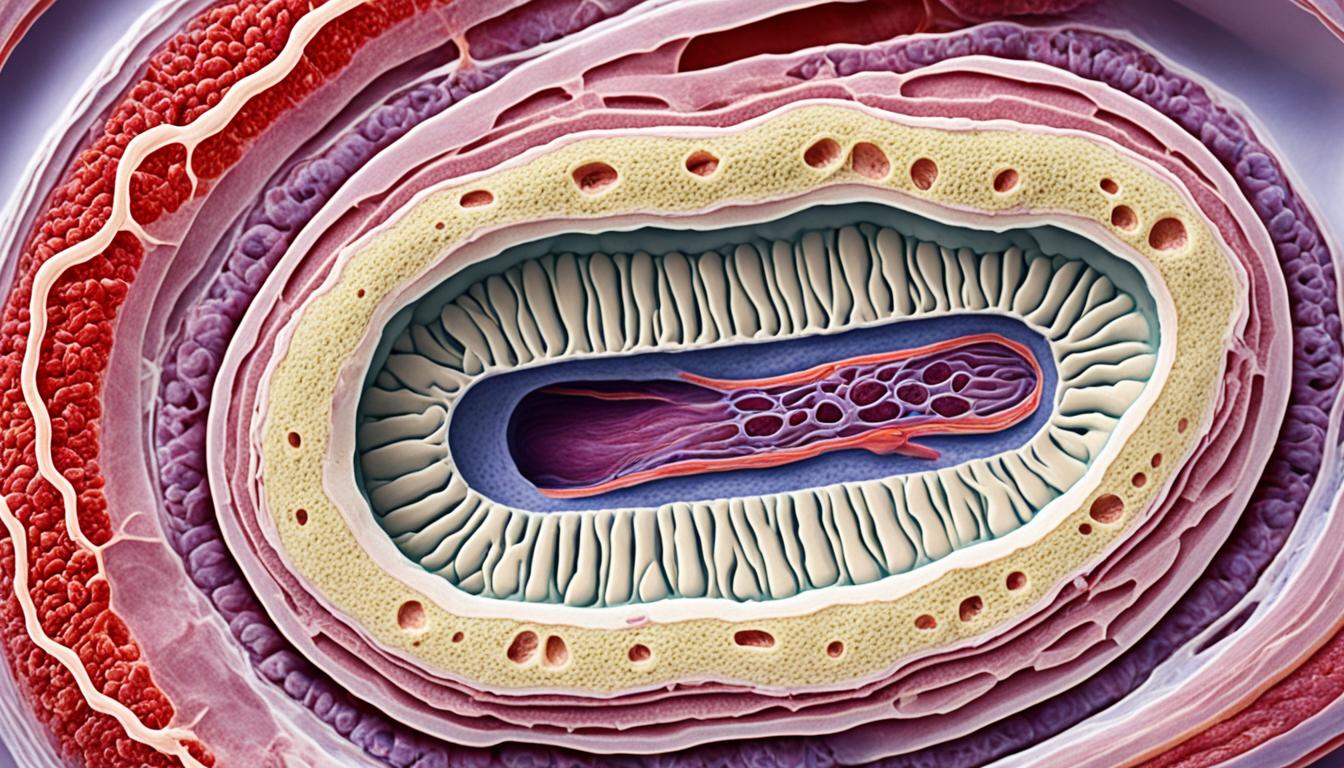Barrett’s esophagus is a problem in the esophagus’s lower part. It can lead to cancer. What happens is, the cells change because of too much stomach acid. We find out if someone has it using a test called endoscopy. This test looks at samples of the throat’s lining under a microscope. The results show us how serious the cell changes are.
Treating Barrett’s esophagus includes removing bad cells, burning them away, or cutting them out. Sometimes, doctors just keep an eye on it. This is because people with Barrett’s are more likely to get cancer. We have noticed more cases of this cancer recently.
Feeling sick, heartburn, and trouble swallowing are signs of Barrett’s esophagus. People might also see blood in their vomit or feel chest pain. Being overweight and having heartburn often makes it more likely you’ll get this disease.
Key Takeaways:
- Barrett’s esophagus affects the lower part of the throat and can be cancerous.
- Too much stomach acid is usually the cause.
- We find out with a test called endoscopy and looking at tissue under a microscope.
- Treatments can remove or burn away bad cells. Surgery is another option.
- Doctors advise keeping track of the cells to catch cancer early.
Risk factors and diagnosis of Barrett’s esophagus
Barrett’s esophagus shows up when the lining of the lower esophagus changes. It often happens because of things like GERD, being very overweight around your middle, and having heartburn for a long time. These make it more likely you’ll get Barrett’s esophagus.
Doctors use a test called an endoscopy to check for Barrett’s esophagus. They put a camera on the end of a thin tube and slide it down your throat. This lets them see the inside of your esophagus. They look for certain kinds of cells that shouldn’t be there.
If the doctor spots anything concerning, they take small samples of tissue, known as biopsies. These samples are looked at closely under a microscope. It’s how they know for sure if you have Barrett’s esophagus. These biopsies are really important for checking how serious it is and what risks you might have.
If you’re found to have Barrett’s esophagus, you need to keep getting checked regularly. Doctors will do more endoscopies to see if the problem is getting worse. This way, they can tell if you’re at risk for a type of cancer called esophageal adenocarcinoma. Doing these checks often helps catch any problems early, making it easier to treat.
Stem cell therapy for Barrett’s esophagus
Stem cell therapy is a new, forward-looking way to treat Barrett’s esophagus. It’s a condition where the lower esophagus lining changes abnormally. This approach uses healthy cells from stem cells to repair the damaged esophageal tissue.
This therapy is exciting because it may help restore the esophagus’s damaged cells. It could even stop Barrett’s esophagus from getting worse. Plus, it might lower the chance of getting esophageal adenocarcinoma, a cancer type.
Even though it’s still early in its research, stem cell therapy offers a lot of hope for Barrett’s esophagus in the future. The world of regenerative medicine is always growing. So, this treatment might bring new possibilities for people with this condition.

